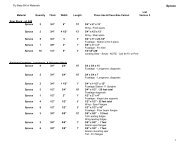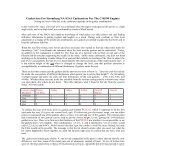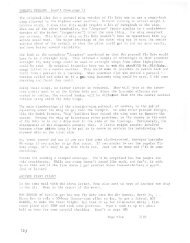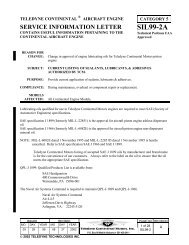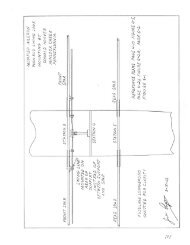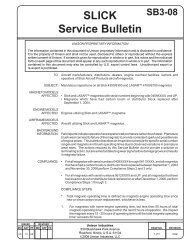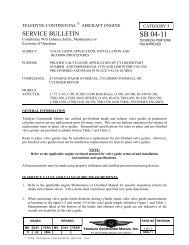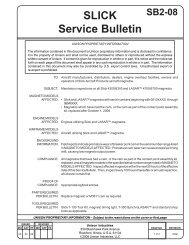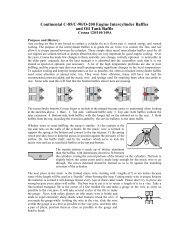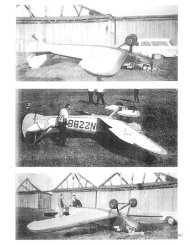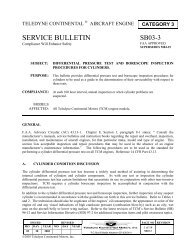You also want an ePaper? Increase the reach of your titles
YUMPU automatically turns print PDFs into web optimized ePapers that Google loves.
THE AIRPLANE<br />
INTRODUCTION<br />
FLY BABY is a structurally simple and easy-to-fly airplane designed to the requirements of the<br />
Experimental Aircraft Association for home construction and storage in a space 7' x 8' x 20',<br />
which is equivalent to the standard home garage.<br />
Great emphasis has been placed upon safe flight characteristics and good low speed performance<br />
for takeoff and landing at some sacrifice of high speed. <strong>The</strong> structure has been designed for<br />
standard airplane engines from 65 to 85 horsepower and the aerodynamic features are of sizes<br />
and proportions suited to obtaining the best all-around performance in this power range.<br />
Because of this, there is not enough advantage to be gained from using engines of significant<br />
higher power to offset the cost and weight penalties. Increasing the power to increase the<br />
aerobatic capability is not recommended. FLY BABY will do simple recreational aerobatics very<br />
well but is not intended for rough air show or competition maneuvers.<br />
Because of the increasing difficulty of obtaining the 65 to 85 hp engines that are no longer<br />
manufactured, many would be builders have written in to ask if the 100 h.p. Continental 0-200<br />
engine can be used safely. <strong>The</strong> answer is yes; the 0-200 can be used without any reinforcement of<br />
the structure. In fact, engines up to the 108 h.p. Lycoming 0-235 can be used safely without<br />
compromising the structure or imposing a weight penalty. Engines heavier than the O-235 are<br />
not recommended.<br />
Questions have been asked, too, about the suitability of the Volkswagen engine as a substitute<br />
powerplant for FLY BABY. While no one has tried one yet, the designer does not feel that this<br />
engine has the necessary displacement to make a good-flying airplane of FLY BABY and does not<br />
recommend it.<br />
Allowance has been made for the fact that many builders will want to make minor departures<br />
from the basic design, and some acceptable variations are shown in the photo page. However, no<br />
changes should be made in really basic structure or in the size, setting, or location of the flight<br />
surfaces.<br />
Low wing monoplane configuration was chosen for the basic <strong>Fly</strong> BABY design for several reasons<br />
- structural simplicity, suitability for low-cost easy-to-rig wire bracing to fuselage and landing<br />
gear, maximum visibility for the pilot, and ease of pilot entry to the cockpit.<br />
For those desiring to convert the basic low wing FLY BABY to an entirely different machine,<br />
supplementary drawings are available for biplane wings which can be fitted to the same fuselage,<br />
tail, and landing rear as FLY BABY 1B. <strong>The</strong> basic monoplane is FLY BABY lA. <strong>The</strong> biplane wings<br />
are not designed to fold.<br />
As a biplane, FLY BABY is comparable to most other home-built biplanes with the exception that<br />
it is slightly larger than average, as is the monoplane, resulting in lighter wing loading and<br />
improved takeoff and landing characteristics. <strong>The</strong> use of sweepback on both wings is to permit<br />
interchangeability of wings between biplane and monoplane arrangements without changing the<br />
pilot's seat, which was originally determined by the wing location and balance requirements of the<br />
low wing monoplane with straight wings. To keep the pilot behind the upper wing center section<br />
i



